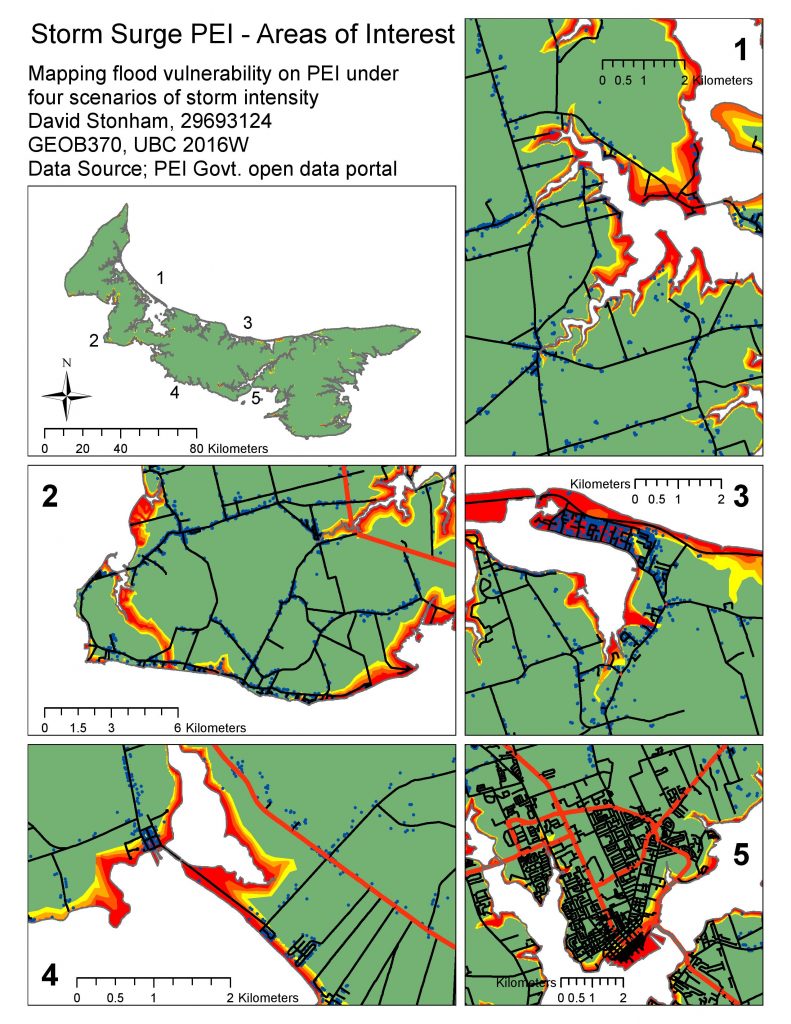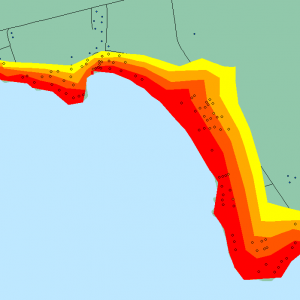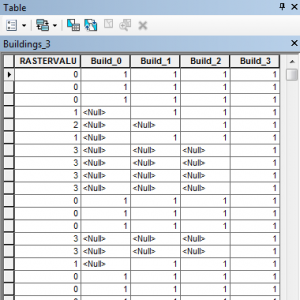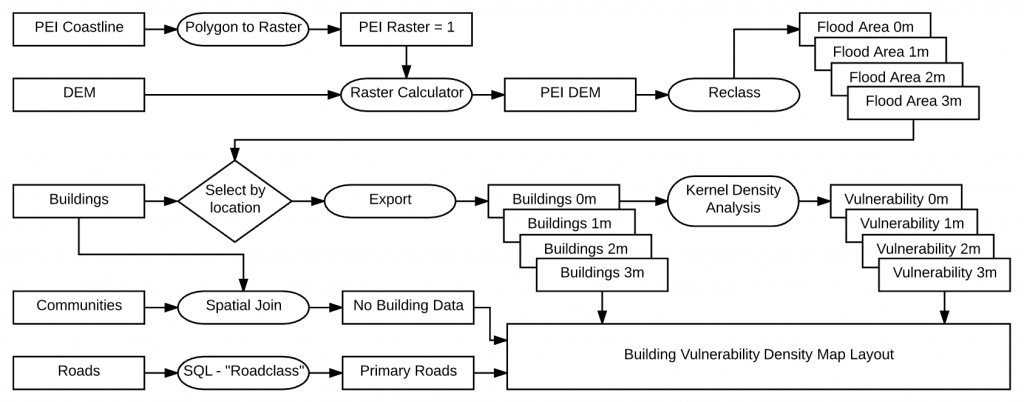Using the digital elevation model (DEM) I was able to classify the data into four bands and export a shape file to represent each of the vulnerability scenarios. These shapefiles will be useful later in the analysis as I will be able to join attributes to the buildings that fall within their boundaries spatially.
At this point I also created my first map layout which shows areas of special interest. Some areas like Victoria (inset 4) will likely experience major damage in the event of an average storm event and by the end of the century, after a 1m rise in sea level, the vulnerability will be greatly exacerbated.




